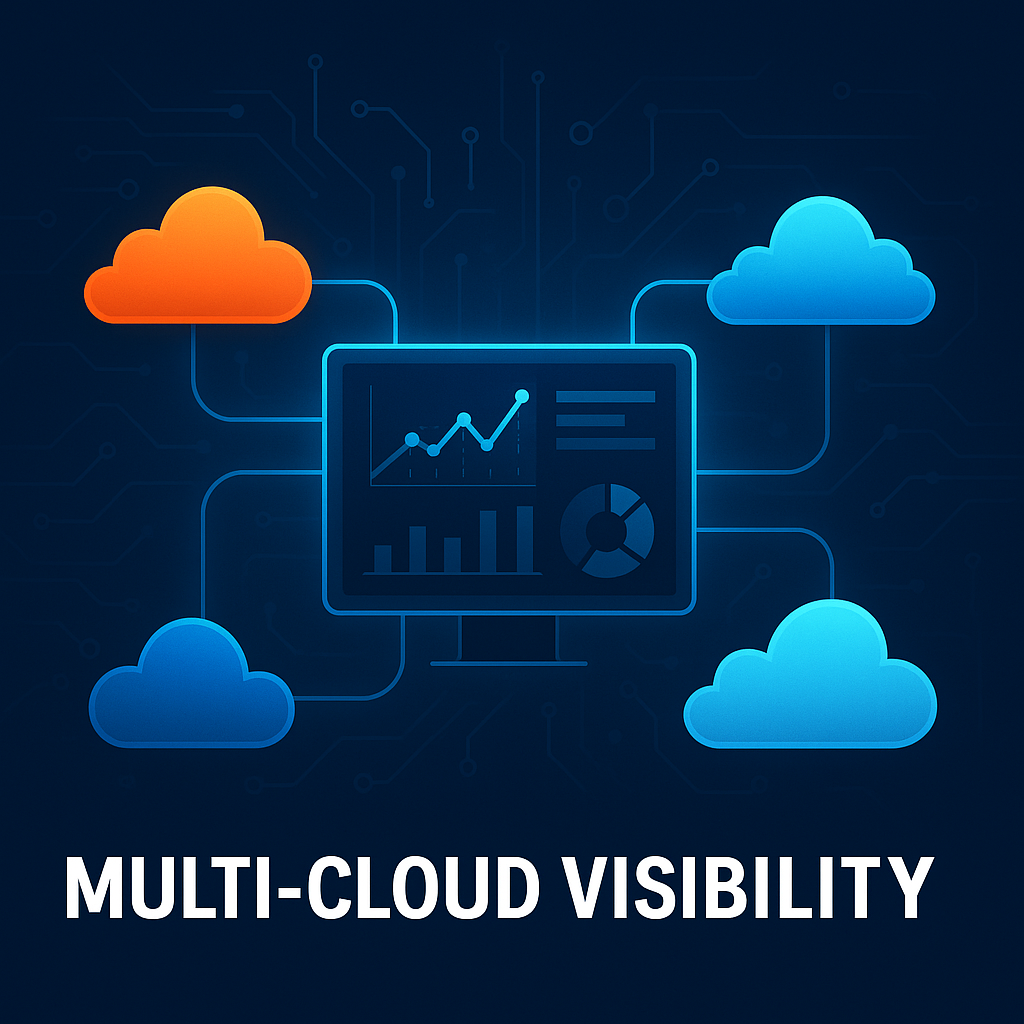As cloud attack surfaces continue to grow at an unprecedented pace, the traditional “set and forget” approach to security is increasingly insufficient. Modern organizations are continually deploying new cloud workloads, migrating core business applications, and leveraging a growing ecosystem of third-party integrations. Each of these activities introduces new entry points for attackers, expanding the risk profile in ways that legacy security tools—such as quarterly vulnerability scans or annual compliance assessments—simply cannot address in real time.
This rapid rate of change requires a fundamentally different security posture. Enter Continuous Threat Exposure Management (CTEM): a proactive strategy designed to deliver continuous, real-time visibility across complex cloud environments. CTEM empowers organizations to detect exposures as they emerge, respond to evolving threats with agility, and ensure operational resilience in an ever-shifting digital landscape. For organizations prioritizing cloud-centric strategies in 2025, adopting CTEM is no longer just a best practice—it’s becoming an operational imperative.
In this post, we’ll dive into why CTEM is now essential for robust cloud security. We’ll examine its unique capabilities in multi-cloud scenarios, highlight the power of ongoing discovery, and explore how prioritizing risks by potential business impact equips organizations with the actionable clarity needed to maintain resilience and compliance in the year ahead.
Cloud Expansion
Cloud adoption has accelerated at an unprecedented rate. Today’s enterprises routinely run mission-critical applications across AWS, Microsoft Azure, Google Cloud, and private cloud infrastructures simultaneously, creating a complex network of interconnected resources. This rapid cloud expansion drives digital transformation and business agility, but it also dramatically magnifies the cloud attack surface—introducing new security challenges that demand innovative solutions.
The Expanding Cloud Attack Surface
As organizations increasingly rely on cloud-native services and serverless architectures, the definition of a “perimeter” has all but disappeared. What used to be a clearly defined network boundary is now an open, fluid environment of APIs, microservices, and distributed workloads. Every API endpoint, misconfigured container, and unpatched function adds to what experts call the cloud attack surface—a constantly shifting landscape where even small oversights can have outsized consequences. Understanding this expansion is the first step toward realizing why a continuous, adaptive approach like CTEM is indispensable for protecting business-critical data in 2025.
Key challenges of this expansion include:
Dynamic environments: Cloud infrastructure is highly fluid, with assets and workloads being provisioned and decommissioned on demand. This constant change makes asset inventory difficult and exposes organizations to hidden or forgotten vulnerabilities.
Multi-cloud complexity: Security teams must navigate disparate tools, configurations, and security models unique to each provider. Managing user access, enforcing consistent policies, and gaining unified visibility across cloud environments becomes increasingly challenging.
Third-party risk: Integrations with SaaS platforms, external APIs, and supply chain partners extend the organization’s digital perimeter. Every connection and plugin potentially opens new vectors for threat actors to exploit.
Traditional security approaches—such as periodic penetration testing, quarterly vulnerability scans, or annual compliance exercises—are ill-equipped to handle this new reality. They offer only snapshots of risk, missing exposures that can develop between assessments.
Cloud environments require protection that is as dynamic and continuous as the infrastructure itself. This is precisely why Continuous Threat Exposure Management (CTEM) is critically aligned with the demands of today’s cloud era. CTEM delivers ongoing risk monitoring, timely exposure detection, and real-time threat intelligence—empowering security teams to stay ahead of adversaries, even as the cloud footprint evolves day by day.
Traditional defenses operate reactively—detecting and responding to incidents after they occur. CTEM flips this model, emphasizing predictive and preventive action. By continuously analyzing telemetry from across your cloud stack, CTEM tools can flag anomalies, reveal misconfigurations, and forecast potential exploit paths before attackers have the chance to act.
This forward-looking posture transforms security from a cost center into a business enabler, where risks are mitigated proactively and innovation proceeds with greater confidence.
Why CTEM Fits Cloud
Continuous Threat Exposure Management was designed for dynamic, ever-evolving cloud environments. Unlike traditional, static snapshot assessments, CTEM employs an active, continuous approach—constantly simulating potential attack scenarios, stress-testing cloud defenses, and analyzing both known and emerging exposures. This ongoing process empowers organizations to identify vulnerabilities before adversaries can exploit them, maintaining a vigilant, adaptive security posture that keeps pace with rapid cloud innovation and change. CTEM’s continuous operation ensures real-time insight, enabling security teams to anticipate threats, remediate risks promptly, and minimize the window of opportunity for attackers.
Key reasons CTEM fits the cloud model:
1. Speed and Agility
Cloud-first businesses must be able to pivot quickly, rapidly scaling resources and deploying new applications. CTEM enables this pace of innovation by delivering continuous feedback loops—so teams receive actionable insights in real time, not just at quarterly intervals. This accelerated cadence enables organizations to detect and remediate exposures immediately, minimizing vulnerability dwell time and empowering development and security teams to maintain momentum without sacrificing protection.
2. Integration with DevOps
CTEM is built to align seamlessly with modern DevOps practices. By embedding directly into CI/CD pipelines, CTEM ensures that every new code deployment and infrastructure update is automatically analyzed for risk, from the earliest stages of development through production release. This continuous integration means security isn’t a bottleneck—it becomes an enabler, safeguarding innovation while upholding the highest standards of compliance and operational resilience.
2. Adaptability
As organizations expand operations across multiple providers and environments, CTEM flexes to meet these demands. It’s engineered for compatibility with diverse cloud ecosystems—AWS, Microsoft Azure, Google Cloud, and hybrid infrastructures—delivering unified visibility and actionable insights across all platforms. This adaptability streamlines risk management, helping security leaders maintain a comprehensive defense posture, regardless of how or where their business scales.
ALIGNING CTEM WITH ZERO TRUST & AI-DRIVEN DEFENSE
CTEM complements modern frameworks like Zero Trust and emerging AI-assisted defense models. Zero Trust ensures that every identity, device, and workload must continuously validate its legitimacy—while CTEM provides the contextual visibility to make those trust decisions meaningful. When integrated with AI-powered analytics, CTEM can detect exposure patterns across petabytes of cloud data and automatically recommend prioritized remediations. Together, these approaches create a feedback-driven ecosystem of continuous validation, closing the gap between identification and action.
In short, CTEM serves as the critical link between rapid cloud adoption and the sustainable cloud security maturity required to protect today’s digital enterprises.
Benefits for Cloud Environments
Let’s break down how Continuous Threat Exposure Management (CTEM) fundamentally reshapes cloud security for organizations in 2025 by enabling unparalleled operational resilience and proactive defense. CTEM combines continuous, real-time risk assessment with automated detection of vulnerabilities and misconfigurations across all cloud environments. By leveraging CTEM, organizations gain unified control and constant situational awareness, empowering security teams to identify threats as they emerge and respond swiftly to contain risks before they escalate. This persistent visibility not only enables rapid remediation but also supports ongoing compliance and reduces the risk of operational disruptions. As a result, CTEM stands as a transformative approach for businesses seeking to stay ahead of evolving cloud threats, maintain customer trust, and safeguard mission-critical operations in a complex and rapidly changing digital ecosystem.
1. Multi-Cloud Visibility
With workloads distributed across AWS, Azure, GCP, and private clouds, organizations often struggle with fragmented visibility and inconsistent risk awareness. Continuous Threat Exposure Management (CTEM) addresses this by consolidating risk data into a unified platform, offering teams a real-time, holistic view across all cloud environments. This single-pane-of-glass approach helps security leaders proactively identify and assess critical risks—whether it’s a misconfigured cloud storage bucket, an exposed API, or an unmanaged asset that could become a backdoor for attackers. By eliminating visibility silos, CTEM dramatically reduces blind spots, ensuring that both routine and complex security threats are surfaced before they can escalate.
For example, a financial services organization operating workloads in both AWS and Azure can use CTEM to automatically detect and correlate duplicate security gaps or compliance exposures across both environments—insights that traditional, provider-specific tools are likely to miss. This empowers the team to take coordinated action, standardize controls, and close vulnerabilities more quickly, thereby strengthening their overall security posture.
2. Continuous Discovery
The dynamic nature of the cloud means assets change daily. New containers are spun up, workloads migrate, and developers may unintentionally leave old services exposed. CTEM addresses this with an always-on approach to asset discovery, ensuring that your security posture adapts as quickly as your IT environment evolves.
This continuous discovery includes:
- Automated, real-time mapping of all new cloud assets as soon as they are created—so that nothing flies under the radar.
- Detection of shadow IT and unauthorized deployments, surfacing hidden workloads or third-party integrations that may bypass centralized governance.
- Ongoing monitoring for misconfigurations and unapproved changes, alerting security teams to exposures the moment they occur—instead of after the fact.
By maintaining a live inventory of every asset—from ephemeral containers to legacy services—CTEM ensures that no cloud resource—whether intentionally deployed or left behind during migration—escapes security oversight. Every corner of your cloud is accounted for, dramatically shrinking the window of opportunity for attackers and making compliance audits far more manageable.
For example, a healthcare provider leveraging CTEM can rapidly identify an exposed storage bucket leftover from a pilot project and remediate it before any sensitive patient data is at risk. This proactive visibility not only prevents potential HIPAA compliance violations but also reinforces operational trust and business continuity in highly regulated sectors.
3. Automating the Cloud Exposure Lifecycle
CTEM’s value extends beyond identification—it automates the entire exposure lifecycle. From initial detection and classification through prioritization, remediation, and validation, CTEM tools orchestrate workflows that once required hours of manual triage. For large enterprises managing thousands of assets, automation ensures consistency and speed, reducing human error and shortening the time from discovery to resolution. This automation not only boosts efficiency but also frees security analysts to focus on high-value strategic initiatives such as policy optimization and threat hunting.
4. Prioritization by Impact
Not all vulnerabilities pose the same level of danger to your organization, and treating every exposure the same leads to inefficient use of security resources. Continuous Threat Exposure Management (CTEM) distinguishes itself by intelligently prioritizing threats based on their true business impact—going beyond surface-level technical severity.
Rather than inundating security teams with an unmanageable array of technical alerts, CTEM delivers meaningful, contextualized insight by asking critical business-centric questions, such as:
- Which risks could disrupt our most essential cloud applications and core business workflows?
- Which exposures may put us at risk of regulatory violations or costly compliance failures?
- Which vulnerabilities are currently being weaponized and actively exploited by threat actors?
By embedding this contextual awareness, CTEM empowers security teams to focus their attention exactly where it matters most—remediating issues that pose the greatest threat to business continuity, customer trust, and compliance obligations.
For example, in a retail setting, CTEM’s intelligent prioritization would automatically suppress alerts for a minor vulnerability in a non-production test workload, while immediately elevating misconfigurations in a payment-processing environment that could expose sensitive financial data or enable fraudulent transactions. This risk-driven approach ensures that mission-critical cloud resources are safeguarded first, strategic risk is reduced, and the organization maintains compliance and operational resilience even as the cloud ecosystem continues to evolve.
Continuous Risk Visibility = Business Resilience
The ultimate promise of CTEM is resilience—a quality that, in today’s environment, extends far beyond mere resistance to attacks. By maintaining continuous risk visibility and treating security as an ongoing process, organizations build a foundation for long-term stability, trust, and performance. This means not only remaining alert to current threats but also nurturing the organizational agility and confidence needed to face emerging risks with assurance.
Bridging Cyber and Business Resilience
CTEM bridges the gap between cybersecurity and overall business resilience by tying exposure management directly to business outcomes. For example, a CTEM platform doesn’t just flag a vulnerable container—it contextualizes the risk in terms of potential revenue impact, service downtime, or customer trust. This linkage empowers executives to view cybersecurity not as an isolated IT concern but as a measurable component of enterprise performance. As boards and regulators demand clearer accountability for digital risk, this convergence of security and business metrics will define mature organizations in 2025 and beyond.
Resilient businesses equipped with CTEM can:
- Maintain critical uptime, minimizing interruptions even in the face of persistent intrusion attempts or sophisticated attack techniques.
- Protect sensitive customer and business data on an ongoing basis, reducing the risk of breaches and reinforcing stakeholder trust.
- Proactively prevent costly downtime by swiftly detecting cloud misconfigurations or responding to ransomware, ensuring continuity of essential operations.
- Address compliance and regulatory requirements with ongoing readiness, eliminating the scramble and stress at audit time and positioning the business as a trusted partner for clients and regulators alike.
- Adapt their security posture in real time, leveraging continuous insights to not only remediate vulnerabilities but also strengthen defenses as the threat landscape evolves.
In 2025, resilience is no longer a competitive differentiator—it’s the new baseline for doing business. Without the continuous coverage and adaptive protection that CTEM delivers, organizations risk exposure, costly setbacks, and a widening gap between themselves and the secure, compliant standards now expected in every industry.
The Future of CTEM: Automation, AI, & Threat Intelligence
Looking ahead, the next generation of CTEM will be defined by rapid innovation in artificial intelligence and machine learning. Automated exposure identification will become significantly more powerful as AI systems continuously parse massive volumes of cloud telemetry, uncovering subtle vulnerabilities and misconfigurations that would evade even the most diligent human analysts. Predictive analytics will enable CTEM platforms to anticipate future attack vectors—leveraging historical incident data and emerging threat intelligence to model how adversaries are likely to target your unique environment.
Adaptive security controls will dynamically adjust defenses based on real-time risk signals, enabling policies and detection rules to evolve in step with changing attack techniques and business priorities. Enhanced threat intelligence integrations will empower security teams to detect, correlate, and respond to emerging campaigns in minutes, not days—translating raw threat data into precise, actionable steps tailored to your specific cloud architecture.
Over the next two to three years, these advances will push CTEM from a primarily reactive approach to a truly predictive, self-optimizing discipline. Businesses that embrace this evolution will be able to reduce time-to-detection, automate remediation, and stay perpetually aligned with both regulatory mandates and the shifting tactics of cyber adversaries. In this environment, CTEM will not simply be a security measure; it will be an engine for operational excellence, organizational resilience, and sustained cyber maturity.
To remain competitive and resilient, organizations must align with this trajectory—investing now in forward-looking CTEM capabilities that will define best-in-class cyber defense for years to come. Those who do will be uniquely positioned to safeguard their assets, ensure business continuity, and foster customer trust amid accelerating digital risk.
Contact us today!
If your organization is embracing cloud-first strategies in 2025, you cannot afford to overlook CTEM. The risks are expanding too quickly, and traditional defenses aren’t enough.
Schedule a cybersecurity assessment with Cyber Advisors today to understand your current exposure and identify the steps needed to implement CTEM effectively. Don’t wait for attackers to exploit your cloud environment—get ahead with proactive cloud defense.




